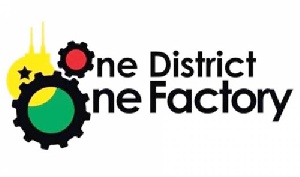Government’s one district one factory initiative does not only have the potential of solving the teaming graduate unemployment that has plagued the nation but will serve as a pivot to building a strong economy for the country. Majority of Ghanaians are fascinated by the IDIF policy launch as it promises to provide employment to many and improve the standard of living. It will curb the rural urban migration and make the various districts attractive to investors.
I could go on and on to mention numerous benefits that the one district one factory will provide. However, all these benefits can only be realized if the energy needs of these factories are met. The world moves on energy and its one of the most critical elements for the success of the 1D1F.
An energy enthusiast like me who is very fascinated about government deploying some renewable energy technologies to meet the energy needs of these factories, decided to scribble this article on the energy nexus of the one district one factory initiative. There are several other areas such as funding, ownership and management structures that will greatly influence the progress of this initiative but this writing is limited to only the influence of energy on 1D1F.
It’s evident from the happenings of the past from 2013 to 2015 that energy insecurity has the tendency to cripple the country’s economy. The Institute of Statistical, Social and Economic Research (ISSER) at the University of Ghana, in a 2014 study estimated that Ghana, on the average, lost production worth about US$ 2.1 million per day through the power crisis alone.
This means that the country lost about US$ 680 million (2 percent of GDP). An old adage goes; once bitten twice shy. It’s therefore imperative that measures are put in place to avoid that gloomy occurrence. It will be disastrous to get into that state of power instability.
Ghana’s energy demand as at 2016 was 2,087 MW. The country has an installed capacity of 3794.6 MW as at the end of December 2016 with a dependable capacity of 3525.1 MW according to the energy commission which gives hope that Dum Sor is a thing of the past.
factories coming onboard will increase energy demand and if measures are not put in place, it will put unnecessary burden on the grid. With a history of volatile energy sector that easily get affected by fuel shortage or drought, proper preparations ought to be undertaken for a successful implementation of such a laudable initiative.
Energy mix
The current energy mix of Ghana is dominated by hydro and thermal power. Increasingly, government’s investment in energy in recent times has been in thermal energy. Increasing generation in thermal energy to meet the ever increasing energy needs of the country will result in high energy cost and increase environmental pollution. Hydro power has become not very reliable due to the unpredictable rainfall pattern.
A more promising alternative is the deployment of renewable energy technologies to cater for some of the energy needs of these factories. The current system does not completely shield us from the perennial power crisis.
Role of Renewables
The siting of some of the factories should be in areas with good solar and wind energy potential. This will enable government and investors to consider generations from these alternative energy sources. Such mini grids and off grid system for factories with lesser energy need will make them energy independent and reduce the burden on the national grid.
With global call for the use of renewables to meet the carbon reduction footprints, the integration of the use of biogas in the factories that will be into agro processing that has remains/waste could be used as raw material for biogas production. This biogas can be used to offset the heat needs of the factory.
Also, the deployment of these renewable energy options will be a fulfillment of the renewable energy act and meeting government’s target of 10 percent of all generations being from renewables by 2020 now 2030 ( according to the Energy Minister).
Maintenance Culture
The long term success of this policy and the use of sustainable energy can only be realized when a proper maintenance culture is practiced. In the field of energy, continuous energy auditing and energy efficiency approaches must be followed to ensure proper utilization or management of energy and at the same time reducing the overall energy cost.
It will be of immerse benefits if these factories have qualified energy managers or technicians to monitor the energy use of these factories and also influence the general behavioral approach towards energy use in the factory.
To ensure the sustainability of the whole energy demand and supply chain, various challenges in the sector such as unbalanced pricing, transmission and distribution losses, inadequate fuel finance and weak energy infrastructure must be solved holistically.
One step forward will then be the introduction of a smart grid infrastructure to effectively and efficiently manage the demand and supply of the electricity.
In conclusion, I will end by saying; energy is the lifeline of the success of one district one factory initiative and my humble opinion on creating awareness on the potential threats unstable power poses should be considered by decision makers when putting things in the pipeline.
Opinions of Tuesday, 1 May 2018
Columnist: Godwin Apenu















